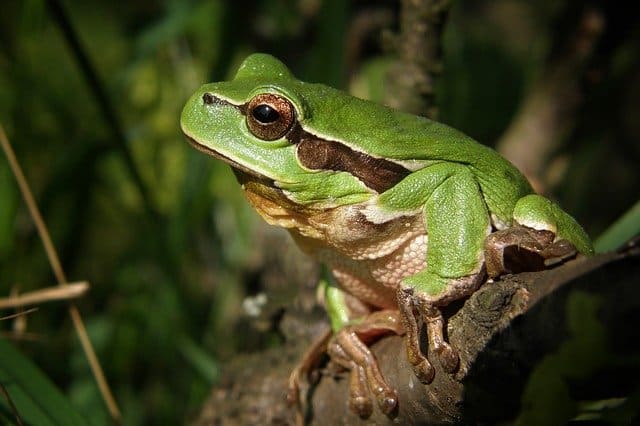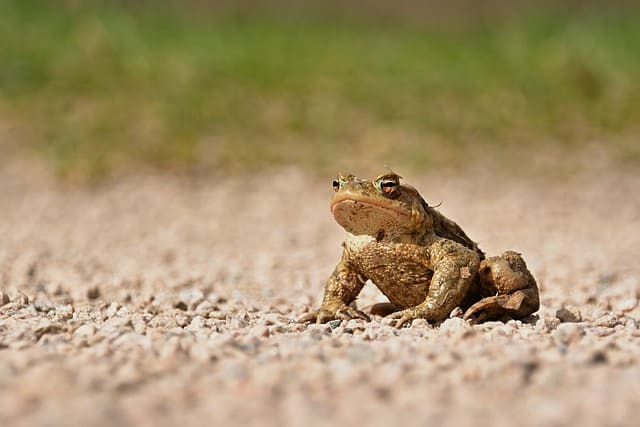The members of Amphibians have either high features such as poison skin or lack the primitive features such as limbs, tails etc thus making it hard to determine whether the species belongs to amphibians or not. So in this article we shall explore the Groups of Amphibians with their weird characters along some interesting things about them.
What are Amphibian Animals? Amphibian are the vertebrate animals that can live in water as well as on land, have smooth, slimy skin without scales, and are permeable to air.
Table of Contents
Examples of Amphibian Animals
- Frogs such as Glass frogs, Tree frogs, Pond frogs, and Golden Dart Frog.
- Toads such as Bufo.
- Salamanders such as Newt, Olm, and Salamandra.
- Caecilians such as Ichthyophis, and Rhinatrema.

Characteristics of Amphibian Animals
- They have the ability to live in both water and land, If we had this feature as a human, it would have brought us great fortune.
- These have skin glands that produce poison and help in the exchange of water, oxygen from the atmosphere, and substances that can fight against skin infections and keep it healthy.
- Some of the Amphibians have ears, For example Frogs. That suggests that they can also hear as well.
- Amphibians in their larval development stage have gills like the fishes and after the larval stage they mature into adult ones by developing lungs that are helpful for respiration of atmospheric air on land.
- Amphibians along the gills for breathing in the water have tails and fins for swimming in the water, Later they get lungs and legs that help them to move on to land life.
- They have Smooth and slimy skin, that are permeable for gases present in their surrounding thus they can live in both the habitats that are underwater and on lands.
- Cold blooded animals, their body temperature is controlled or regulated by their surrounding environment.
- Most of the Amphibians can produce the poison from the skin. That helps them to survive against some of the predators. The Golden Dart Frog and rough-skinned newt are the example for poison producing amphibians.
- Some of the members of the Amphibians such as Frogs and Salamanders take care of their young ones by carrying eggs on the back pouches, or the young ones along with them.
- All the amphibians begin their life with gills for respiration later on when they grow they get lungs. However some retain their gill till they reach adulthood.
Habitats of Amphibians Animals
Amphibians are present on every continent in the world except Antarctica. However, Frogs live more in water than toads.
Did you know the largest Amphibian Animals? The Chinese Giant Salamander is the largest amphibian that reaches 6 feets of length and weighs about 22 Kg.
Types of Amphibians Animals
There are about 4,000 species of amphibians distributed on earth, which are set in three groups depending on the presence of a tail and limbs.
These groups of Amphibians are
Frogs and Toads:
These are the amphibians having four limbs, live in water and moisture environments and even in dry lands, lay their eggs in water and are carnivorous in diets that feed on insects, bugs, butterflies etc. Some of them have ears.
Did you know? Frogs have teeth in their upper jaws and not any in lower jaws, while toads do not have any teeth at all.
Examples of Frogs and Toads
- Frogs such as Glass frogs, Tree frogs, and Pond frogs.
- Toads such as Bufo.

Did you know?
- The Goliath Frog is the largest Frog that can grow up to 15 inches of length, and weighs about 3.5 Kg.
- The Paedophryne amauensis is the smallest Frog that can grow up to 0.3 inches of length.
- The Sharp-nosed Tree frog is the frog that can jump up to 30 feet high.
Characteristics of a Frog and Toads
- Frogs and Toads have a short body,bulging eyes ,webbed fingers and no tail.
- They are good at jumping as they have long and powerful legs.
- Frogs have ears for hearing.
- Frogs have a ‘voice box’ or ‘larynx’ that can produce sounds to get control of their territory and to find mates.
What do Frogs and Toads Eat? Foods of Frogs and Toads are insects, small fish, small mammals such as mice, bugs, worms, cockroaches, snails, slugs, spiders, small critters and smaller arthropods.
Similarities Between Frogs and Toad
| Subject | Frogs | Toads |
| Lays their eggs in | water | water |
| Diet | Carnivorous | Carnivorous |
| Number of limbs | Four | Four |
Difference Between Frogs and Toad
| Frogs | Toads | |
| Skin type | Moist, Smooth | Dry, Hard |
| Habitat | River and ponds(Less on land) | Garden, Woods (More on land) |
| Warts on body | No warts present on body | Warts present on body |
| Eyes | Bulging eyes | Normal eyes |
| Tooth in upper jaw | Have tooth on upper jaws | No tooth present on upper jaws. |
| Hind limbs | Longer than a toad. | Shorter than frogs. |
| Sleep time | Night | Day (Nocturnal animals) |
| Eggs | Laid in clusters. | Laid in long chains. |
Salamanders:

Salamanders are a group of amphibians having regeneration power, with a lizard-like appearance with snouts, long bodies, small limbs, and tails that remain even after they reach adulthood. For example Newts, Olm and Salamandra.
Characteristics of a Salamanders
- These types of Amphibians have skinny bodies, short legs, long bodies and long tails.
- They live wet habitats that are usually wet, that can be wetlands.
- Power of regeneration is present in the salamander that allows them to regrow the lost or damaged parts of the body in an accident or during the predator’s attack.
- These look like a reptile but not lizards, For example, Newt are the amphibians that look like reptiles.
Examples of Salamanders
- Newt
- Fire Salamanders
- Olm
Caecilians:
These are the amphibians that live in freshwater, do not have limbs giving them the name limbless amphibians and have strong skulls with poorly developed eyes that cause them to look like worms as they also have flat tails.
Characteristics of a Caecilians
- Caecilians are the limbless amphibians, like frogs and salamanders these don’t have limbs at all.
- They have the appearance of a worm or serpentine thus they are also called as the vermiform or serpentine amphibians.
- These Caecilians are freshwater amphibians.
- Their diets include insects, thus they are carnivores.
- Having flat tails, underdeveloped eyes, is also causing them to look like worms.
- Caecilians vary in size from the size of a pencil to that of a child.
- They have a strong skull and a pointed nose that all help them to burrow through mud.
Examples of Caecilians
- Ichthyophis.
- Rhinatrema.
Life cycle of Amphibian
The life cycle of amphibians starts with an egg that is filled with gel to give them cushion and the coverings are not rigid like in the reptiles or birds thus these eggs are transparent.
A larva is primitive young that are unidentifiable that hatches out of the eggs and are called tadpoles if the eggs belong to Frogs or Salamanders. These tadpoles or the hatched eggs are highly difficult to determine to which species or the type of amphibians they belong to.
These larvae go through various stages of metamorphosis, that is physical and anatomical changes, while developing legs, arms, and lungs, all of which are helpful in their ability to survive on land. However, They may maintain their gills that were present during hatching during these metamorphoses or physical and anatomical changes along lungs. After undergoing metamorphosis, or physical and anatomical changes, such as the development of arms, legs, and lungs, the larvae are ready to leave the water and live on land.
Also Read : Difference Between reptiles And Amphibians
5 Fun Facts About Amphibians
- Frogs are unable to survive in salt water.
- The majority of Amphibians have gills and lungs, allowing them to survive in both water and on land.
- Some Amphibians do not have limbs at all, For example, The Amphibian group Caecilians such as Ichthyophis and Rhinatrema. Along they have poorly developed eyes that are beneath the skin or bones.
- Frogs are the amphibians with limbs while Caecilians are limbless amphibians.
- salamanders are the amphibians with tails in their entire life both in larval and adult stages of life, while frogs have tails and fins in larval stages only.

